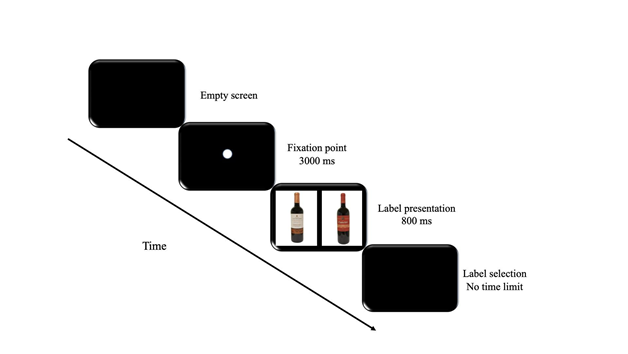Letizia Alvino, Efthymios Constantinides, Rob van der Lubbe
In this study, we examined whether the posterior contralateral negativity (PCN), which is a measure derived from ERPs, can be used to assess and predict consumers’ preferences for a specific product. The PCN is commonly used to estimate attentional selection by focusing on stimulus-side dependent EEG lateralization above parieto-occipital areas. We computed the PCN to assess whether a certain wine bottle with a specific label caught participants’ visual attention, and additionally, by relating the PCN with behavioral data, to determine whether early effects of visual attention confirmed participants’ final preferences for a specific label.

Figure 1. The sequence of events on a trial. On every trial, two bottles were presented, one in the left visual field, and the other in the right visual field. In total four different bottles were presented in different combinations in 2 sessions of each 384 trials. Participants were instructed to press a button on the side of the preferred bottle. EEG was measured from 32 electrodes.

Figure 2. The PCN for the preferred bottle.On the left hemisphere, the contra-ipsilateral difference is displayed while a mirror image is presented on the right hemisphere.
Our findings indicated that PCN amplitudes provided highly relevant information on people's preferences. The overall preference for a specific bottle, determined on the basis of the button presses, corresponded with the most pronounced PCN from 240 to 280 ms after presenting the pair of bottles. Furtermore, individual differences in preferences for a specific bottle correlated with the estimated PCN amplitudes. These findings suggest that preferences for a specific product can be predicted on brain activity measured shortly after presenting the product.
